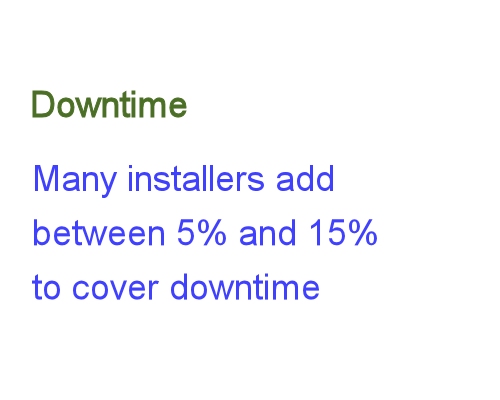Labour costs
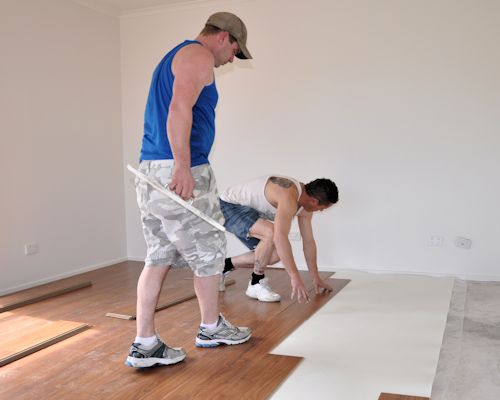 Audio for slide 1 (mp3 |6|KB)
Audio for slide 1 (mp3 |6|KB)
In principle, estimating on-site labour costs is very straightforward - just multiply the hourly rate of pay by the number of hours required to complete the job.
For example, if an installation is likely to take 2 people 8 hours to complete and they're paid $25 per hour, the calculation would be:
Labour hours (or 'man hours'):
2 people x 8 hours = 16 hours
On-site labour cost:
16 hours x $25 per hour = $400
However, in practice there are a few extra variables that you need to build into the estimates. Here are some of these variables.

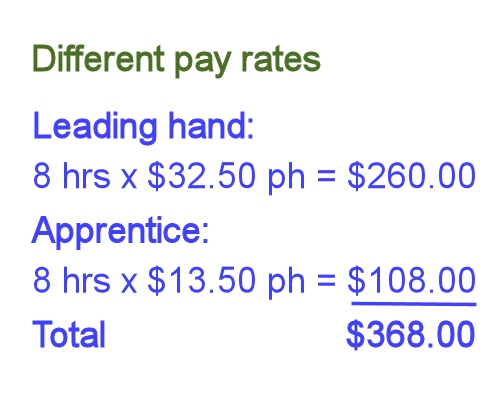 Audio for slide 2 (mp3 |6|KB)
Audio for slide 2 (mp3 |6|KB)
1. Different pay rates
Your team of installers might include people paid at different rates, depending on their level of responsibility. For example, if you had one leading hand and one apprentice on-the-job for one full day, their labour costs might be as shown below.
Leading hand: 8 hours x $32.50 per hour = $260.00
Apprentice: 8 hours x $13.50 per hour = $108.00
Total cost: = $368.00

 Audio for slide 4 (mp3 |6|KB)
Audio for slide 4 (mp3 |6|KB)
2. Overtime
If a job needs to be completed quickly, you may have to pay your workers overtime, or ask them to work on a public holiday. A typical overtime allowance is 50% on top of the standard wage.
Let's say our two-man team will spend 10 hours on the job to finish it in a single day, with the last two hours paid at a 50% overtime allowance. The first step is to calculate the overtime rate.
If you're using a calculator, you'll probably be able to press the function keys as shown below.
$46  50
50 
 $69 per hour
$69 per hour
Note that not all calculators operate in the same way, so you may have to vary the sequence of keys to add a percentage.

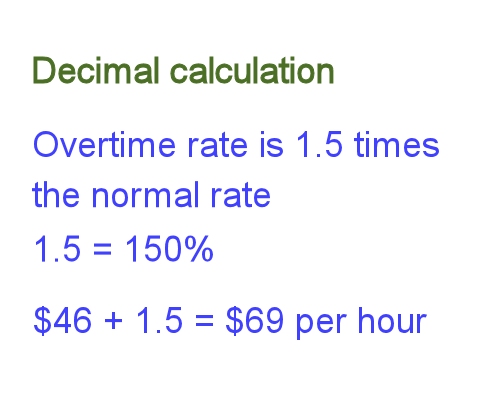 Audio for slide 5 (mp3 |6|KB)
Audio for slide 5 (mp3 |6|KB)
Alternatively, you can simply multiply the original figure by 1.5 - which is another way of saying that the overtime rate is 150% of the normal rate. In other words, 150% expressed as a decimal is 1.5. Therefore:
$46 x 1.5 = $69 per hour
For a more detailed explanation of percentages and decimals, and examples of how to use them in calculations, go to the lesson in Making measurements called: Decimals and percentages.

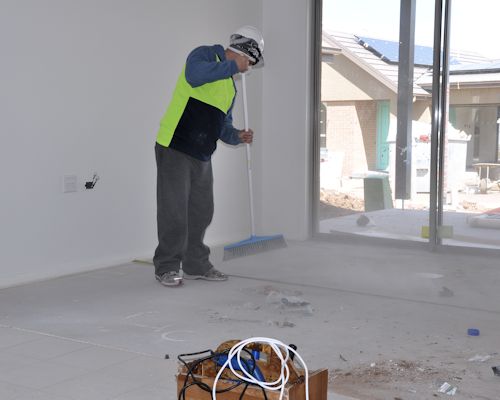 Audio for slide 7 (mp3 |6|KB)
Audio for slide 7 (mp3 |6|KB)
3. Downtime
'Downtime' refers to the times when the team is getting paid but not actually working productively.
Obviously, you want to minimise downtime as much as possible, but there will always be a certain amount of non-productive time spent on the job.
This could be because workers are cleaning up, having breaks, re-parking vehicles, and so on.
There may also be times when workers have to attend toolbox meetings or site induction sessions. And there might be occasions when a mistake is made and work has to be redone.


Learning activity
Audio 9 (mp3 |6|KB)In the previous learning activity you calculated the cost of materials for a job at Sunnyvale. Now we'll say you have estimated that the labour component will be as shown below.
| Task | Time |
| Deliver and unload materials | 2 hours |
| Pull up old floor (and place in skip bin outside jobsite) | 3 hours |
| Prepare subfloor | 3 hours |
| Install vinyl planks | 6 hours |
| Downtime allowance | add 10% to total time |
Your team comprises two people, who will work together for the whole job. Their rates of pay are:
Supervisor: $31.80 per hour
Apprentice: $12.70 per hour
Work out the total labour cost for this project.








